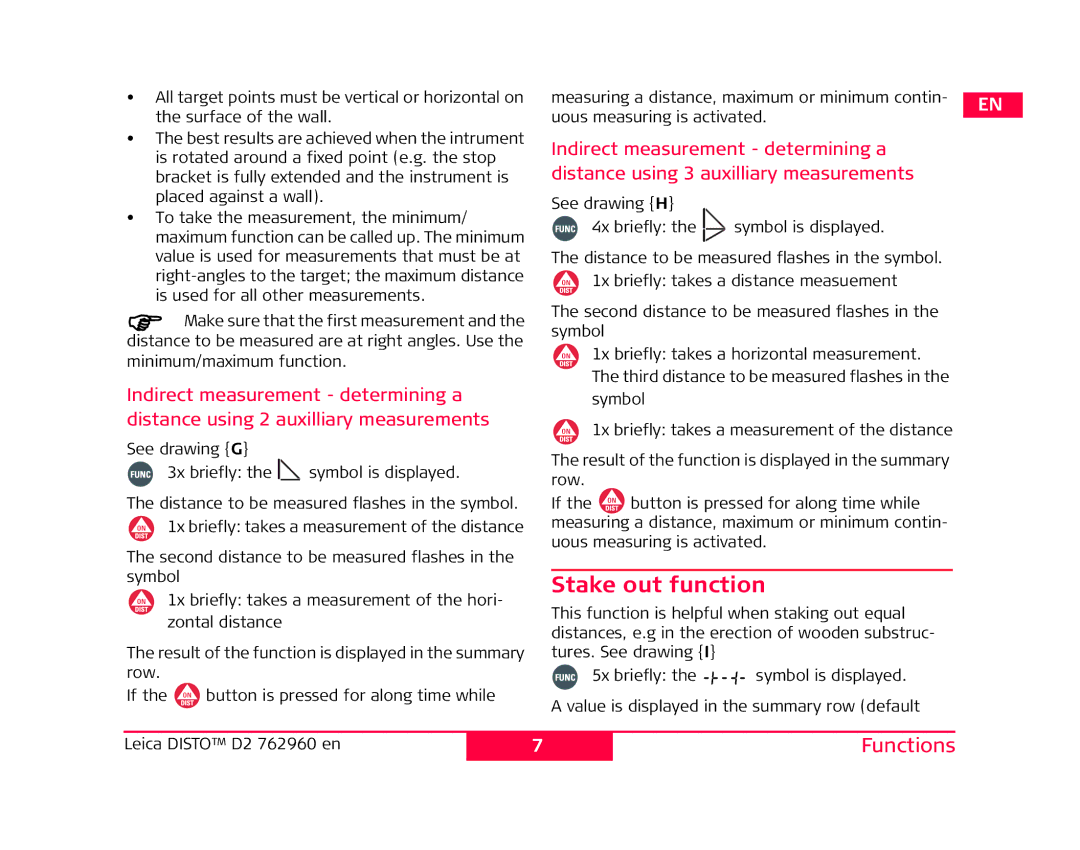
•All target points must be vertical or horizontal on the surface of the wall.
•The best results are achieved when the intrument is rotated around a fixed point (e.g. the stop bracket is fully extended and the instrument is placed against a wall).
•To take the measurement, the minimum/ maximum function can be called up. The minimum value is used for measurements that must be at
)Make sure that the first measurement and the distance to be measured are at right angles. Use the minimum/maximum function.
Indirect measurement - determining a distance using 2 auxilliary measurements
See drawing {G}
3x briefly: the ![]() symbol is displayed.
symbol is displayed.
The distance to be measured flashes in the symbol. 1x briefly: takes a measurement of the distance
The second distance to be measured flashes in the symbol
1x briefly: takes a measurement of the hori- zontal distance
The result of the function is displayed in the summary row.
If the ![]() button is pressed for along time while
button is pressed for along time while
measuring a distance, maximum or minimum contin- | EN | |
uous measuring is activated. | ||
|
Indirect measurement - determining a distance using 3 auxilliary measurements
See drawing {H} |
|
4x briefly: the | symbol is displayed. |
The distance to be measured flashes in the symbol. 1x briefly: takes a distance measuement
The second distance to be measured flashes in the symbol
1x briefly: takes a horizontal measurement. The third distance to be measured flashes in the symbol
1x briefly: takes a measurement of the distance
The result of the function is displayed in the summary row.
If the ![]() button is pressed for along time while measuring a distance, maximum or minimum contin- uous measuring is activated.
button is pressed for along time while measuring a distance, maximum or minimum contin- uous measuring is activated.
Stake out function
This function is helpful when staking out equal distances, e.g in the erection of wooden substruc- tures. See drawing {I}
5x briefly: the ![]()
![]()
![]()
![]()
![]() symbol is displayed.
symbol is displayed.
A value is displayed in the summary row (default
Leica DISTO™ D2 762960 en
7
